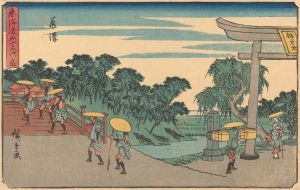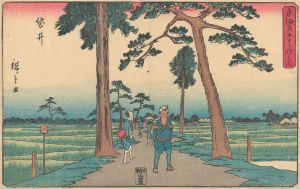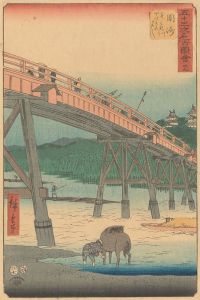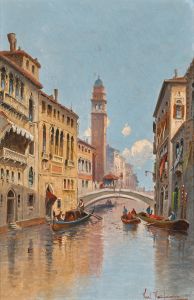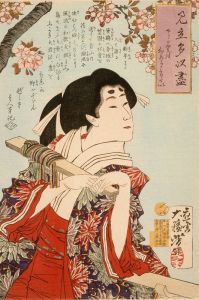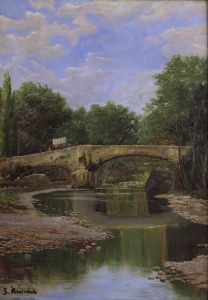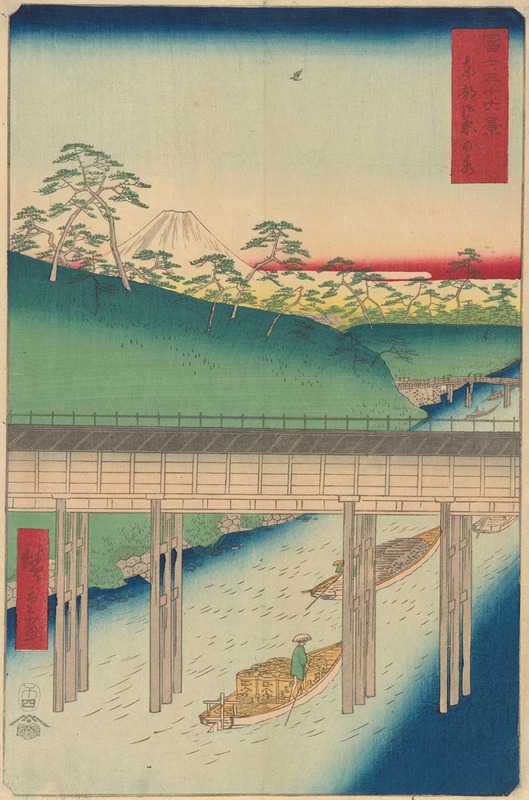
Ochanomizu Bridge
A hand-painted replica of Andō Hiroshige’s masterpiece Ochanomizu Bridge, meticulously crafted by professional artists to capture the true essence of the original. Each piece is created with museum-quality canvas and rare mineral pigments, carefully painted by experienced artists with delicate brushstrokes and rich, layered colors to perfectly recreate the texture of the original artwork. Unlike machine-printed reproductions, this hand-painted version brings the painting to life, infused with the artist’s emotions and skill in every stroke. Whether for personal collection or home decoration, it instantly elevates the artistic atmosphere of any space.
Ochanomizu Bridge by Andō Hiroshige is a notable woodblock print created by the renowned Japanese ukiyo-e artist Andō Hiroshige. Hiroshige, who lived from 1797 to 1858, is celebrated for his landscapes and his ability to capture the transient beauty of nature and urban life in Edo-period Japan. His works are part of the ukiyo-e genre, which flourished from the 17th to the 19th centuries and is characterized by its woodblock prints and paintings.
The Ochanomizu Bridge print is part of Hiroshige's famous series "One Hundred Famous Views of Edo" (Meisho Edo Hyakkei), which was produced between 1856 and 1858. This series is one of Hiroshige's most acclaimed works and consists of 118 prints, each depicting a different scene from Edo, now known as Tokyo. The series captures the essence of Edo's landscapes, landmarks, and daily life, offering a glimpse into the city's culture and environment during the late Edo period.
The Ochanomizu Bridge print specifically portrays the Ochanomizu area, which is located in the modern-day Bunkyō and Chiyoda wards of Tokyo. The name "Ochanomizu" translates to "tea water," a reference to the water from the Kanda River that was once used for the tea ceremonies of the ruling Tokugawa shogunate. The bridge itself spans the Kanda River, a significant waterway in Edo that played a crucial role in the city's transportation and commerce.
Hiroshige's depiction of Ochanomizu Bridge is characterized by his masterful use of perspective and color. The print showcases the bridge as a vital connection between different parts of the city, bustling with activity and surrounded by the natural beauty of the river and its banks. The composition often includes elements such as boats on the river, travelers crossing the bridge, and the lush greenery of the surrounding area, all rendered with Hiroshige's distinctive style that combines realism with an idealized vision of nature.
The "One Hundred Famous Views of Edo" series, including the Ochanomizu Bridge print, was created during a time of significant change in Japan. The country was on the brink of opening up to the West after centuries of isolation, and Hiroshige's work captures a world that was soon to undergo rapid transformation. His prints serve as historical documents that preserve the memory of Edo's landscapes and urban life before the modernization that followed the Meiji Restoration in 1868.
Hiroshige's influence extends beyond Japan, as his work significantly impacted Western artists in the late 19th century, particularly the Impressionists. The bold compositions, innovative use of perspective, and vibrant colors found in Hiroshige's prints inspired artists such as Vincent van Gogh and Claude Monet, contributing to the Japonisme movement in Europe.
Today, Hiroshige's Ochanomizu Bridge and other prints from the "One Hundred Famous Views of Edo" series are highly regarded for their artistic and historical value. They are preserved in museums and collections worldwide, continuing to captivate audiences with their beauty and insight into a bygone era of Japanese history.






